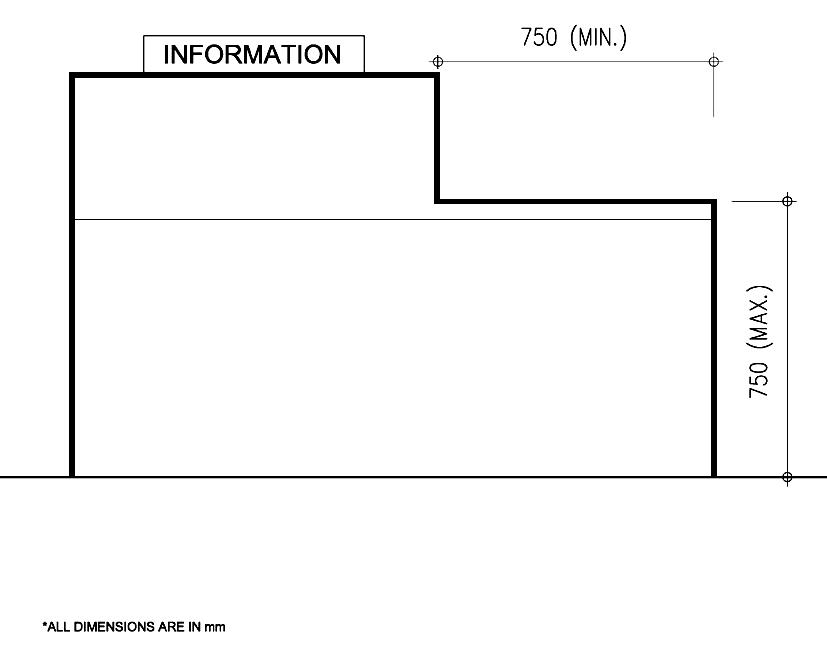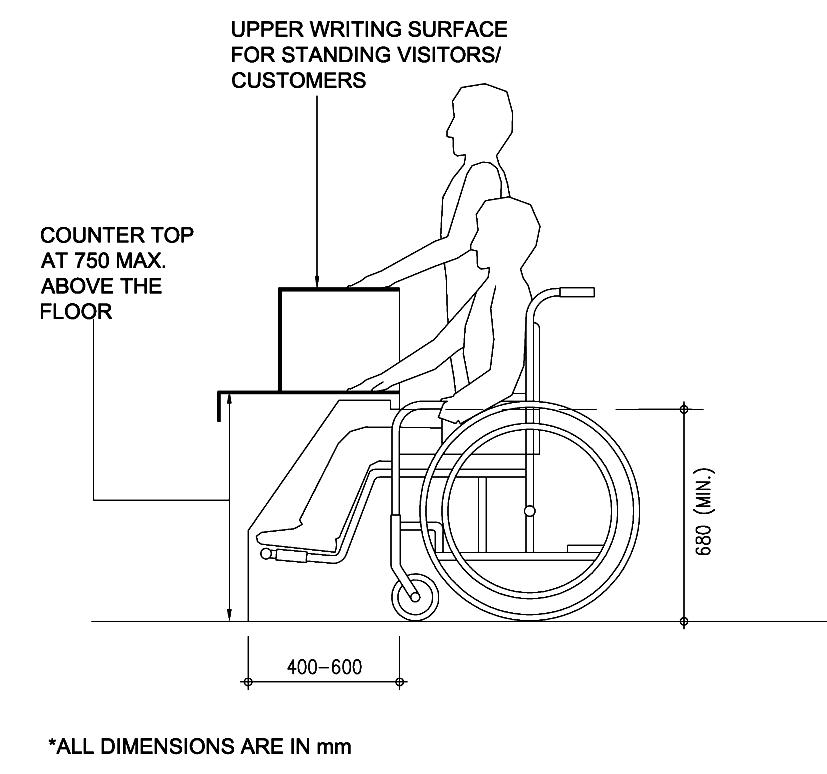
1 minute read
Figure 36 - Tactile Warning Strip to Escalator or Passenger Conveyor
(PASSENGER CONVEYOR)
(PASSENGER CONVEYOR)
Advertisement
*ALL DIMENSIONS ARE IN mm
Figure 36 – Tactile Warning Strip to Escalator or Passenger Conveyor
BEST PRACTICE SECTION
A. Design Considerations
(a) Signs should be clear and easy to read and understand in order to assist persons with intellectual, cognitive and sensory disabilities.
(b) International symbols are to be used for purpose of standardization and apprehension by all persons with a disability residing in Hong Kong or visiting from overseas. Examples of standard public information symbols are shown in Figure 37.
(c) Prominent signs with high color and luminous contrasts as well as special shapes are recommended to be used for the elderly.
(d) Safety for persons with visual impairment should be considered.
Information such as distance to the destination, name of building etc. should be conveyed to the persons with visual impairment. The suggested provisions are voice message, Braille and signs with high luminous contrast.
(e) To account for persons with visual impairment, larger fonts, more prominent and well-defined shapes of signs are recommended.
(f) For categories of buildings as required in Table 2 in Chapter 2, tactile guide paths should be provided for persons with visual impairment from the main entrance to lift zone, public information/service counter, Braille and tactile floor plan, and staircase/escalator provided with audible signals. Braille and tactile floor plan showing the locations of major common facilities should be provided in a location in that building which is conspicuous to persons with visual impairment.







